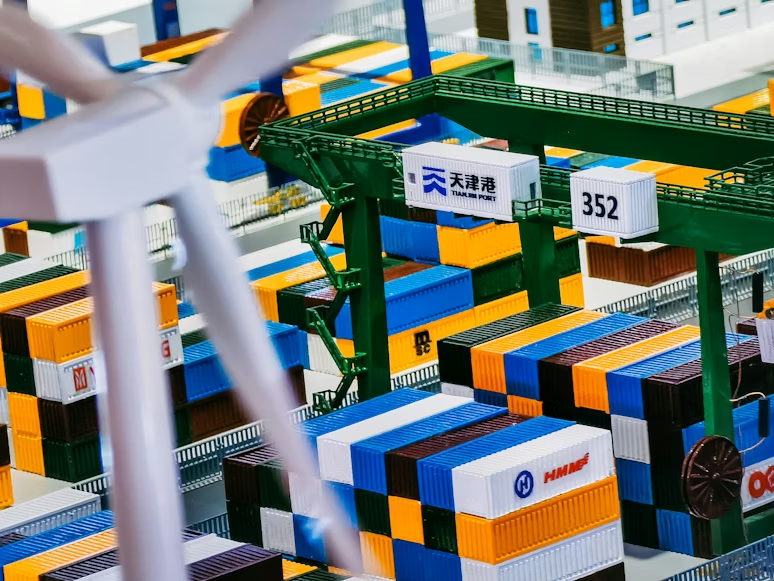In contemporary delivery and logistics, automation stands as a pivotal force transforming operational landscapes, yet it’s not solely about self-driving vehicles or colossal machinery on factory floors. Rather, automation’s true essence lies behind the scenes, supporting industry professionals by streamlining seemingly minor yet crucial tasks.
Addressing the persistent challenges of manual data entry and the potential for human error in tracking shipments via lengthy spreadsheets, it becomes evident that the most time-consuming tasks often pose significant challenges.
As the logistics sector adapts to dynamic demands, automation emerges as a key competitive advantage. Successful delivery and logistics enterprises recognize the necessity of technology adoption, necessitating the elimination of outdated legacy systems. Failure to swiftly act could subject the industry to last-mile impediments, environmental pressures, and evolving geopolitical tensions such as those arising from conflicts like the Russia-Ukraine situation.
The transformative potential of automation technology in tackling the supply chain’s primary hurdles and reshaping work methodologies is significant.
In managing packages and oversized shipments, meticulous documentation guarantees transparency between senders and receivers. Professionals handling this aspect ought to effortlessly complete forms and transcribe data for documentation. However, this manual approach is precarious, particularly during mounting backlogs and intensified stress levels, often leading to inadvertent mistakes.
The human touch remains crucial in processing daily delivery documents, bills of lading, commercial invoices, waybills, and customer clearance paperwork. Human involvement in entering essential information line by line into internal systems and boxes creates vulnerability. Coping with high volumes of physical documents increases the likelihood of transcription errors, resulting in potential revenue losses of up to 12% and immeasurable time spent rectifying these errors.
This challenge isn’t isolated but pervasive across the industry. Teams engaged in data entry confront diverse customer-generated formats, inconsistencies, nuances, and handwriting legibility issues, prompting exploration of alternatives like intelligent document processing (IDP).
IDP represents a viable solution by enhancing accuracy in paperwork processing and alleviating backlogs. Leveraging artificial intelligence and machine learning, IDP enables end-to-end automation of document-centric processes, accommodating structured and unstructured formats like PDFs, images, and handwritten forms. Not only does IDP convert these formats into machine-readable data swiftly, but it also does so with superior accuracy and efficiency compared to human capabilities.
Back-office automation stands as a triple win in the transportation sector. It aids organizations in retaining revenue traditionally lost to paperwork inaccuracies, empowers employees to focus on high-level tasks instead of drowning in administrative duties, and notably benefits customers. Automation assures customers of reliable information tracking and quicker service delivery.
In the realm of delivery and logistics, three distinct automation benefits significantly impact operations:
- Accurate Processing: Customers can tailor automation to their desired accuracy levels, mitigating revenue discrepancies and enhancing data accuracy.
- Organizational Agility: Cutting-edge automation facilitates customizable processes infused with machine learning adaptability, enabling swift adjustments amidst regulatory changes or surging demands, ensuring organizational agility.
- Flexible Data Extraction: Automation empowers organizations to confidently extract, classify, and enrich data from diverse formats, spanning handwritten BOLs to delivery slips containing essential revenue information.
Automation’s role in logistics and transportation extends beyond giant machinery or drones. Intelligent and human-centric automation revolutionizes delivery operations, fostering an ideal scenario for all stakeholders.
Forward-thinking enterprises recognize the significance of time in a high-demand landscape. Embracing automation, these organizations surpass expectations, scale seamlessly, and reimagine business operations by minimizing mundane tasks, setting the stage for a future of symbiotic human-machine collaboration.
Your source for supply chain logistics news updates: The Supply Chain Report. Enhance your international trade knowledge at ADAMftd.com.
#automationinlogistics #intelligentdocumentprocessing #supplychainautomation #logisticsinnovation #backofficeautomation #AIinlogistics #dataaccuracy #machinelearninglogistics #logisticschallenges #documentautomation #efficiencyinlogistics #logisticstechnology #automationbenefits #logisticsworkflow #automationtransformation #futureoflogistics #supplychainrevolution #paperlesslogistics #logisticssolutions #flexibledataextraction #humanchangepoweredbyAI

















